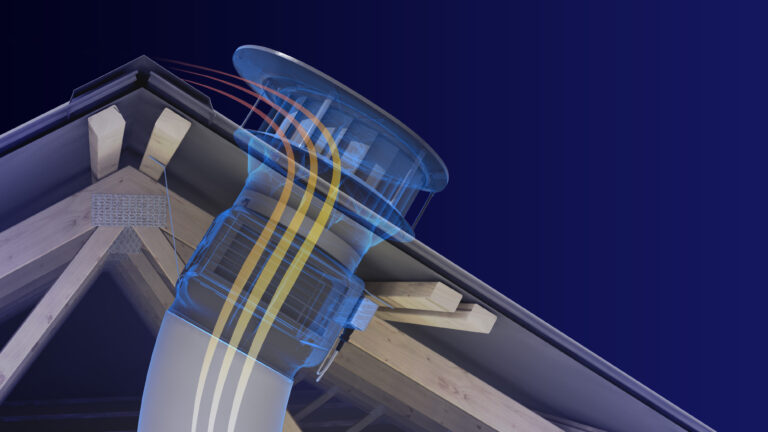When people think about fire safety, most picture alarms blaring, water spraying from sprinkler heads, or someone rushing to use a fire extinguisher. But there’s one feature that often goes unnoticed, even though it plays a huge role in saving lives during a fire: ventilation.
Smoke is usually more dangerous than flames. It spreads faster, causes disorientation, reduces visibility, and can quickly become deadly. A proper smoke ventilation system keeps air moving, clears escape routes, and buys time when every second counts.
So why is it so often left out of the conversation?
What Smoke Ventilation Really Does
Smoke ventilation systems have one job: to remove smoke from a building during a fire. This isn’t just about improving air quality. It’s about making sure people can get out and firefighters can get in. By moving smoke out of corridors, stairwells, or large open areas, these systems help:
● Maintain clear evacuation routes
● Reduce the heat level within the building
● Limit smoke damage to the structure and contents
● Create better visibility for fire crews during rescue efforts
This isn’t theoretical. In real emergencies, the difference between a building with proper smoke ventilation and one without can be life or death.
Why It’s Often Ignored
Ventilation systems are often hidden behind ceilings or integrated into walls. Unlike fire extinguishers or emergency signs, they’re not immediately visible. Out of sight means out of mind. That invisibility makes them easy to overlook during planning or budgeting. They also tend to receive less attention during routine checks, especially if building managers assume other fire systems are enough. But alarms only alert. Sprinklers only control flames. Neither will remove the thick, choking smoke that spreads long before a fire can be put out.
Where Smoke Control Is Critical
In some buildings, the absence of a proper ventilation system could turn a fire into a large-scale disaster. Multi-storey buildings are a prime example. Smoke rises fast, making upper levels and staircases especially vulnerable. Without controlled ventilation, these routes can become unusable within minutes.
Underground car parks are another high-risk area. Smoke and toxic gases have nowhere to go unless they’re actively extracted. Poor ventilation in these settings can also create long-term damage after the fire is out.
Then there are large open-plan environments like warehouses or shopping centres. These spaces may seem airy, but without a system that directs smoke out of key areas, the entire building can quickly fill with dangerous fumes. In all these settings, well-designed ventilation is essential.
Understanding the Systems: Natural vs Mechanical
There are two main types of smoke ventilation systems. Each works differently, and both have their place depending on the building layout.
Natural systems use the basic principle of hot air rising. Roof hatches or vents open automatically to allow smoke to escape upward. These systems often rely on wind and pressure differences to function effectively. They have fewer moving parts and work well in buildings designed with airflow in mind.
Mechanical systems use powered fans and ductwork to draw smoke out. These are more complex but also more reliable in environments where natural airflow can’t be trusted, like underground spaces or tall buildings. They’re often the better choice when complete control over smoke movement is required.
The important point is this: whichever system is in place, it must be maintained properly and tested regularly.
The Maintenance Factor
Ventilation systems cannot be installed and forgotten. They need regular attention just like any other critical safety feature. Without consistent checks, vents can become blocked, motors can fail, or control panels can stop working properly.
Routine maintenance should include:
● System activation checks
● Testing the control mechanisms
● Cleaning and inspecting all vents, hatches, and fans
● Verifying that airflow paths remain unobstructed
These tasks aren’t optional. A well-designed ventilation system that fails during a fire is just as dangerous as not having one at all.
Common Myths That Lead to Poor Planning
A lot of misconceptions lead to ventilation being left out or undervalued during fire safety planning. Here are some of the most common:
“We have alarms, so we’re protected.” Alarms warn people, but they don’t manage smoke or keep exits usable.
“The building isn’t big enough to need it.” Even small fires in confined areas can cause smoke build-up that makes escape impossible.
“We’ll rely on the fire brigade.” Fire crews need time and safe access. Ventilation supports their work, it doesn’t replace it.
These beliefs are not just outdated, they’re dangerous.
Ventilation Needs to Be Part of the Whole Plan
Fire safety only works when every system plays its part. Smoke ventilation should be designed alongside alarms, suppression systems, fire doors, and evacuation planning. When one part of that puzzle is missing or weak, the rest becomes less effective.
Integration also means that ventilation should activate automatically during a fire, without relying on someone to trigger it. It should react as quickly as an alarm system does. Ideally, the building’s fire strategy should be reviewed regularly, especially if layouts or building use changes.
The Safety Feature You Can’t Afford to Ignore
Smoke ventilation doesn’t get much attention. It isn’t loud or obvious. But in the middle of a fire, it can be the system that makes the biggest difference.
It keeps escape routes clear. It gives people more time. It makes rescue operations possible. And it often prevents the worst outcomes, simply by giving smoke somewhere to go.
Overlooking ventilation could mean designing a building that works perfectly in every situation except an emergency, and that’s not good enough.
Make sure ventilation isn’t the missing piece in your fire safety plan. Because when the smoke comes, it won’t wait for you to figure it out.
